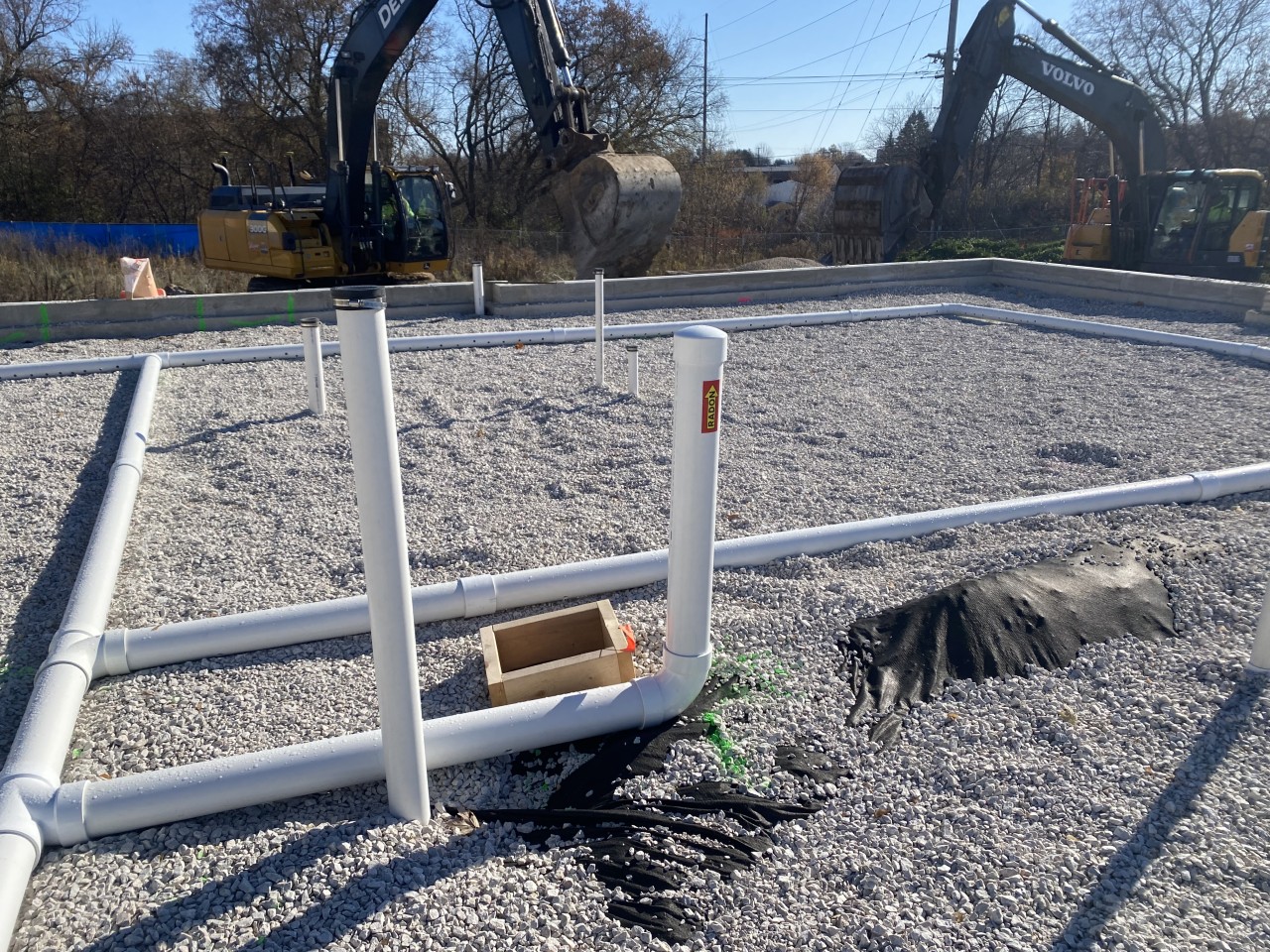Securing safety: Vapor intrusion mitigation system design ensures healthy environments
Some scents, like chocolate chip cookies or fresh linen, evoke delight.
Others, like smoke from a fire, serve as a warning, signaling that something could be wrong.
But what if something was wrong – and you couldn't smell it? Those smells – or vapors – are perhaps the most harmful because you're breathing them without knowing it. Then, you don't take action to get away and it harms your health in the process.
That's precisely why Fehr Graham puts so much effort into vapor intrusion prevention for its clients. We help property owners identify and remedy harmful vapors escaping into the air.
Understanding vapor intrusion
From solvent chemicals at a dry cleaner to petroleum at a gas station, odorless vapors can be caused by a range of operations. Historically speaking, the types of businesses that put a property at risk for vapor intrusion, such as gas stations, dry cleaners, and automotive repair or printing shops, are common in urban areas. The solution when redeveloping these properties includes vapor intrusion investigation and remediation, which can cost anywhere from a few thousand to hundreds of thousands of dollars. Likewise, work can last anywhere from months to years, depending on the contamination level.
Mitigating health risks
Consider the recent incident in a Midwest city where 150 residents of an apartment building were abruptly removed from their homes because of dangerous levels of trichlorethylene, or TCE. The area previously housed manufacturing operations. Without an effective mitigation system, vapor intrusion can harm the health of residents, devalue properties or make them entirely uninhabitable.
When Fehr Graham approaches a potential vapor intrusion, the first step is identifying a problem through laboratory analytical testing. Then, we determine which nearby buildings may be affected by these vapors.
The next step is creating a vapor intrusion mitigation system design for those buildings to protect owners and occupants. Generally, that includes sealing the building's slab or foundation to prevent as much vapor as possible from entering the structure. Then, like a home radon system, a good vapor mitigation system is also designed with strategically placed PVC piping and fans that pull harmful vapors from beneath the building and safely exhaust them into the air.
Solutions for vapor intrusion mitigation system designs
In most cases, such a system is sufficient for restoring a safe environment from vapors. When it's not, however, additional remediation might be necessary. Those can include a range of solutions ranging from in situ chemical reduction or oxidation to bioremediation and phytoremediation.
Of course, planning is the best policy when it comes to vapor intrusion. You can't change what has already happened at a property to cause a chemical release into the air. However, it's important to complete environmental due diligence when buying a property for planned redevelopment. Secure Phase I and Phase II Environmental Site Assessments during the buying process so you know if vapor intrusion is a risk. It's easier and less expensive to include planned remediation before or during construction than as an afterthought.
There's no doubt that vapor intrusion is a serious issue with potentially lethal consequences. It has been an issue for decades but has only been regulated since the early 2000s.
Safety is our priority
If you have a vapor concern, Fehr Graham can conduct your testing, mitigation design and system construction oversight. Our main goal is keeping families, employees and consumers safe from odorless vapors they might not even realize are dangerous.
To learn more about vapor intrusion and mitigation efforts, contact us or call 920.453.0700.
 |
Dillon Plamann is a Project Hydrogeologist who helps with soil and groundwater investigations, remedial activities, due diligence and building material assessments. He also works on reports, work plans, proposals, budgets, and Phase I and II Environmental Site Assessments. Reach him at |
Collaborative, Insightful, Results-Driven Solutions
Fehr Graham provides innovative engineering and environmental solutions to help improve the lives and communities of our customers.

